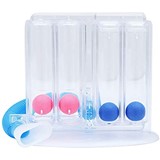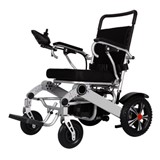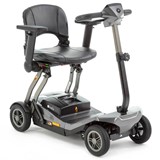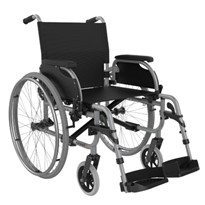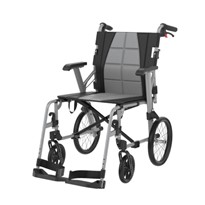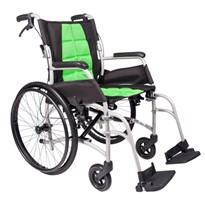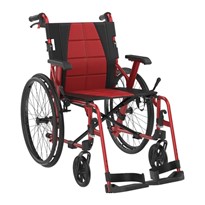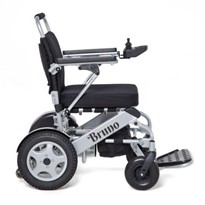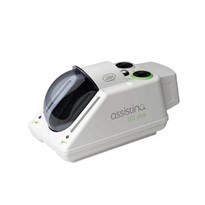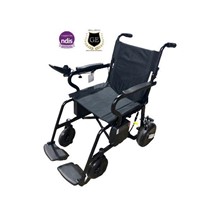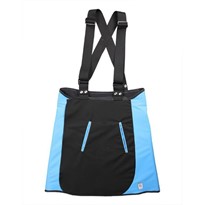It's hard and can be frustrating, especially for people who need a wheelchair every day. A wheelchair that fits just right is super important.
A good-fitting wheelchair isn't just about feeling comfy. It's like having a superpower that helps you do things on your own and join in fun activities every day.
What advantages come from using a wheelchair that fits properly?
1. Moving Around Easily:
Wheelchairs let you move wherever you want, all by yourself or with someone else's help. It makes life more fun and comfortable, helping you join in activities easily.
2. Being on Your Own:
Sometimes, especially for older friends, feeling a bit wobbly when walking makes it tricky to do things. A good wheelchair fits just right and helps them be on their own again, enjoying hobbies and fun stuff they missed.
3. Stay safe from falls:
Wheelchairs also keep you safe from getting hurt. They're like superheroes, preventing falls and stopping things like sore spots or blood clots. The right fit makes sitting super comfy and helps you breathe and swallow better, making life awesome!
4. Feel Cosy:
A wheelchair that fits perfectly is like sitting on a cloud. It helps your back, makes you comfy, and even helps you breathe better. It's like having a chair that's just for you!
What are the different types of wheelchairs?
There are two main kinds of wheelchairs: ones that you move with your hands, called manual wheelchairs, and ones that have a motor and move on their own, called electric wheelchairs. Manual ones are lighter, but you need to use your hands to go, while electric ones are heavier and can move by pressing a button. So, some you push, and some go by themselves!
There are two main types of wheelchairs: manual and electric. Let's talk about each one.
1. Manual Wheelchairs:
These wheelchairs are light and don't have a motor.
You need to use your hands to move them, like pushing the wheels or having someone push you. They are good if you want to stay active and push yourself around.
2. Electric Wheelchairs:
These wheelchairs are heavier because they have a motor.
You don't need to use your hands much; just press a button, and it moves on its own.
They're great if you want to move around without using a lot of physical force.
Which one is the right wheelchair?
There's no such thing as a right or wrong wheelchair. The one you need depends on what you need it for. It's like picking the best tool for a job. So, people who use wheelchairs should talk to their doctors to find the one that's just right for them and fits their lives.
Things That You Should Consider While Buying a Wheelchair?
When buying a wheelchair, several key considerations can ensure that the chosen wheelchair is the right fit for the user. Comfort is paramount, so selecting a wheelchair with comfortable seating and proper back support is crucial. Ensure that the wheelchair is appropriately sized, taking into account the user's height, weight, and body proportions.
These measurements are essential not only for ensuring comfort but also for preventing the development of pressure sores and other skin injuries.
Seat Width: The seat width of a wheelchair plays a crucial role in ensuring a proper fit for the user. While it might seem like a small detail, the correct seat width is essential for the user's comfort and safety.
If the seat is too narrow, it can result in pressure ulcers, causing painful sores and skin injuries. On the other hand, a seat that is too wide may lead to the user sliding forward, posing an increased risk of accidents.
Seat Depth: Seat depth is an important measurement in wheelchair fitting. If the seat is too shallow, it can make the user slide forward, causing discomfort and poor posture.
On the other hand, if the seat is too deep, it may create pressure points and raise the risk of skin injuries. The best seat depth allows the user's hips to rest comfortably in the chair while leaving a few inches between the back of their knees and the front of the seat.
Seat Height: Seat height is a crucial measurement for a well-fitted wheelchair. If the seat is too high or too low, it can lead to discomfort, bad posture, and a higher chance of falls or accidents.
The perfect sitting position means the person's feet can rest flat on the ground, and their knees are comfy and bent. For those who need extra support, like people with limited lower body movement or amputations, adjusting the seat height can make it easier for them to get in and out of the wheelchair safely.
Armrest height: Getting the armrest height just right is super important for a user's comfort and how easily they can move around. If the armrests are too high, it can make the person's shoulders go up and cause pain in the neck and shoulders. But if the armrests are too low, it might make the person slouch and feel uncomfortable.
The perfect height for arm supports is when the user's elbows can rest comfortably at a right angle and their hands can sit nicely on the armrests. This way, it helps reduce tiredness and strain in the upper body and makes it easier for the person to steer the wheelchair. So, finding the ideal armrest height is a big deal for feeling good and moving around easily!
Backrest height: The height of the backrest is really important for how someone sits and moves in a wheelchair. If the backrest is too high, it can make the person's neck and upper back feel uncomfortable. On the other hand, if the backrest is too low, it might cause the person to slouch and have pain in the lower back. So, finding the right height for the backrest is key to making sure someone sits comfortably and moves around well in their wheelchair.
Weight: How much someone weighs is really important when picking a wheelchair. The weight of the person using the wheelchair can change how stable it is, how easy it is to move around, and how strong it needs to be.
It's super important to choose a wheelchair that can handle the weight of the person using it. If the wheelchair has to carry too much weight, it might break, and that can be dangerous. So, making sure the wheelchair can handle the right amount of weight is key to keeping things safe and in good shape.
What is the difference between attendant-propelled and self-propelled wheelchairs?
Attendant-propelled wheelchairs are designed to be pushed by someone other than the user, typically featuring larger rear wheels for the attendant to grip and smaller front wheels for stability. These wheelchairs are often lighter and are suitable for individuals with limited upper-body strength or mobility who require assistance with movement. On the other hand, self-propelled wheelchairs are designed for the user to propel themselves, featuring larger rear wheels that the user can reach and push. These wheelchairs tend to be heavier due to the additional components for self-propulsion and are suitable for individuals with sufficient upper-body strength and coordination, offering greater independence for the user. The choice between the two depends on the user's mobility, strength, and preference for independence or assistance.





-160x160-state_article-rel-cat.png)














